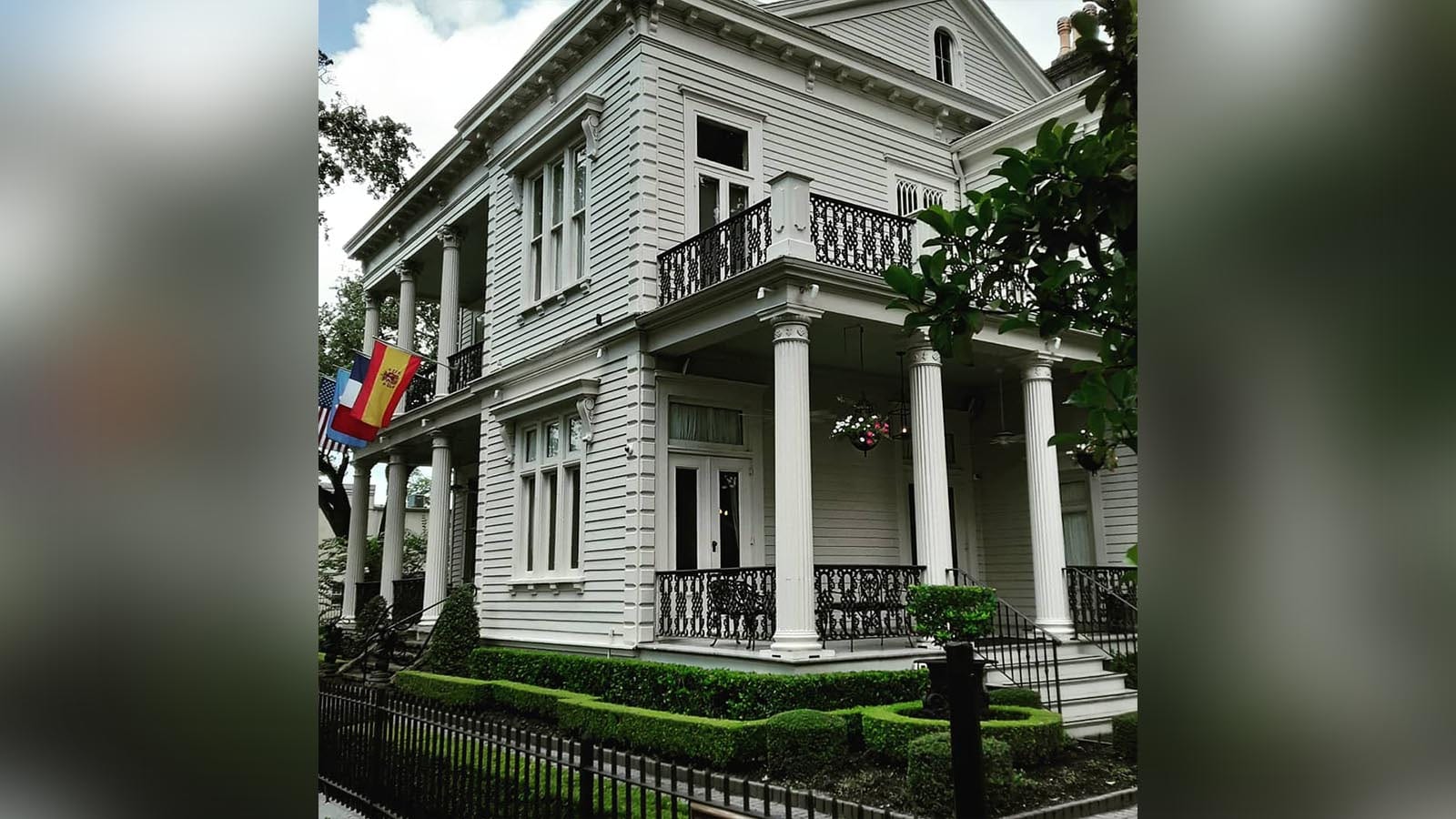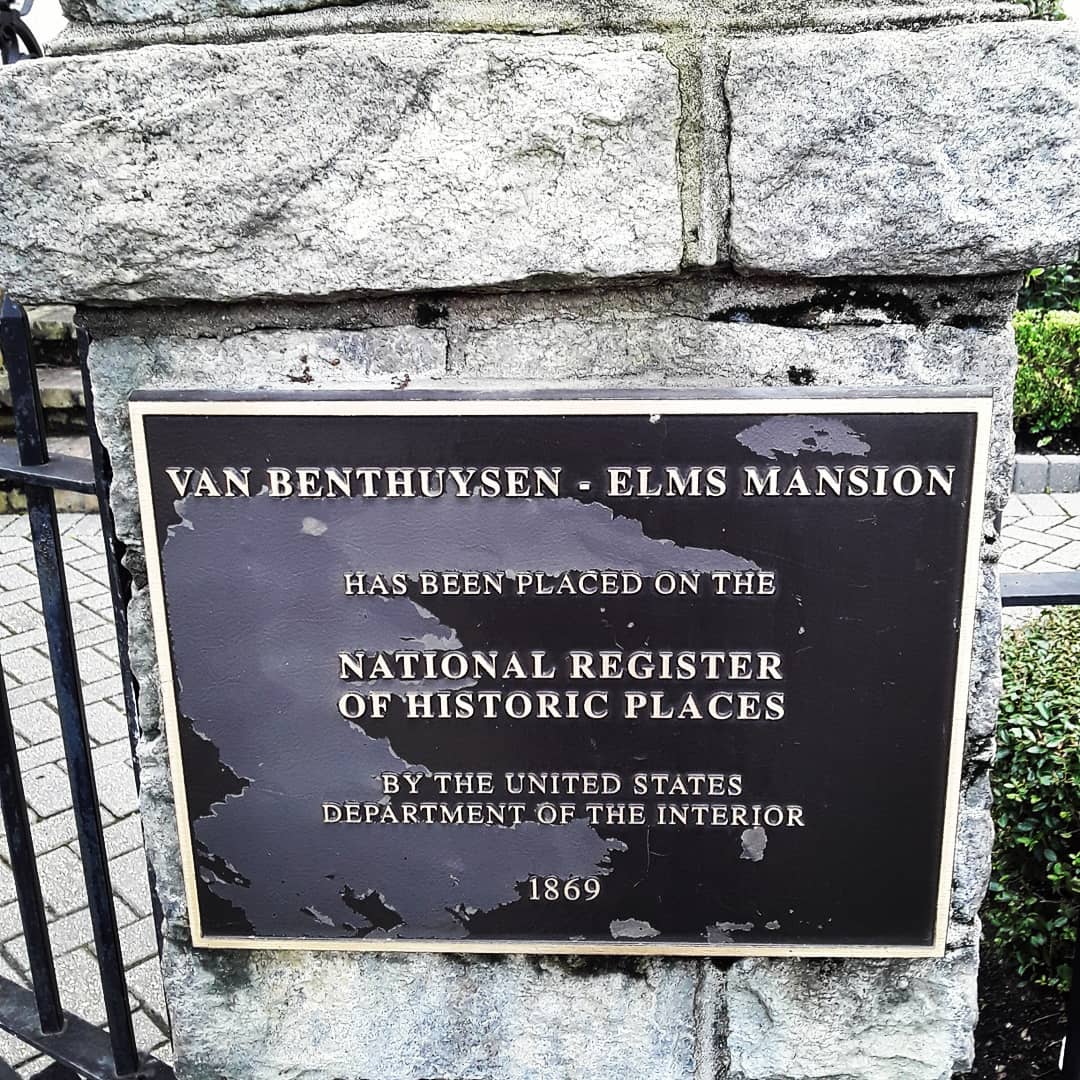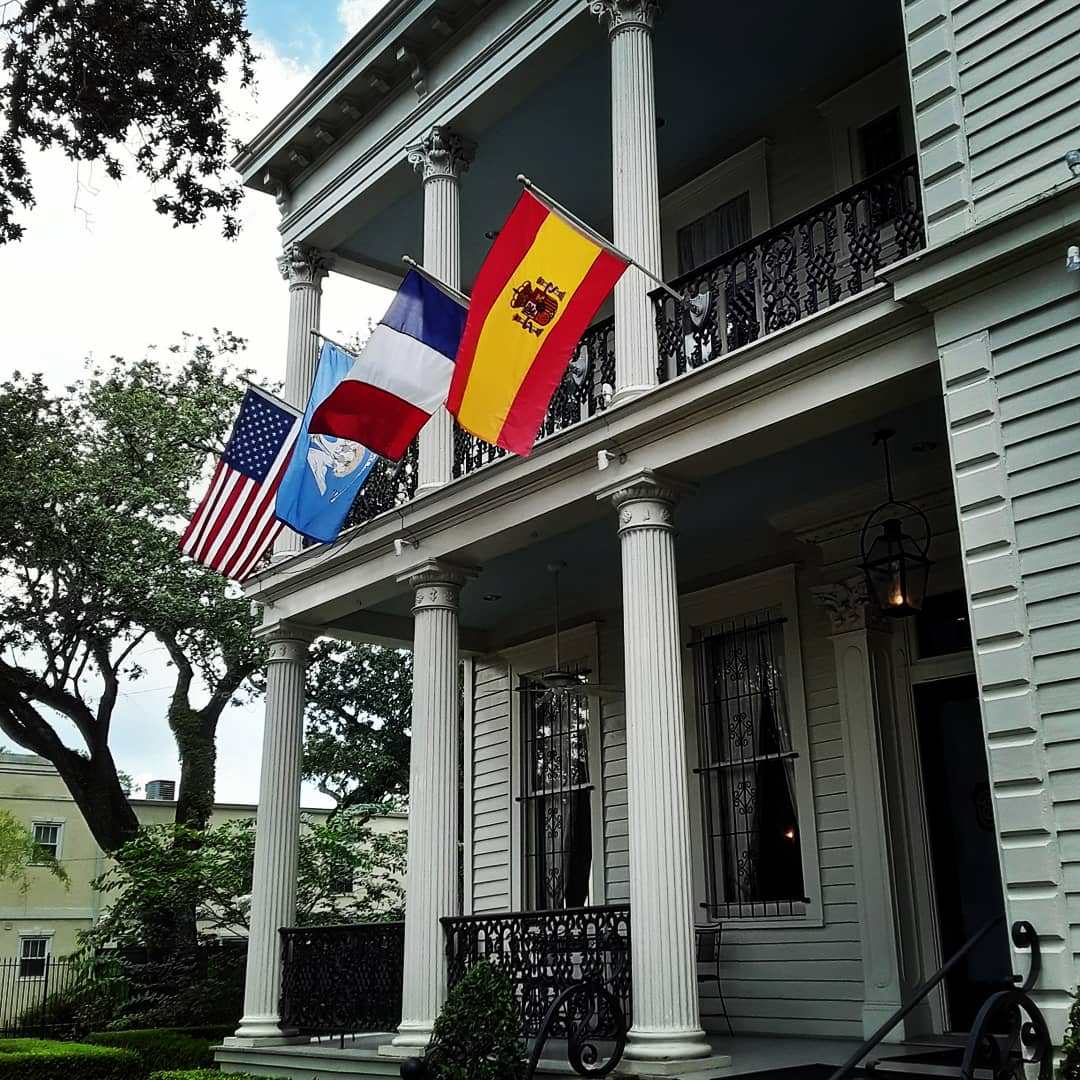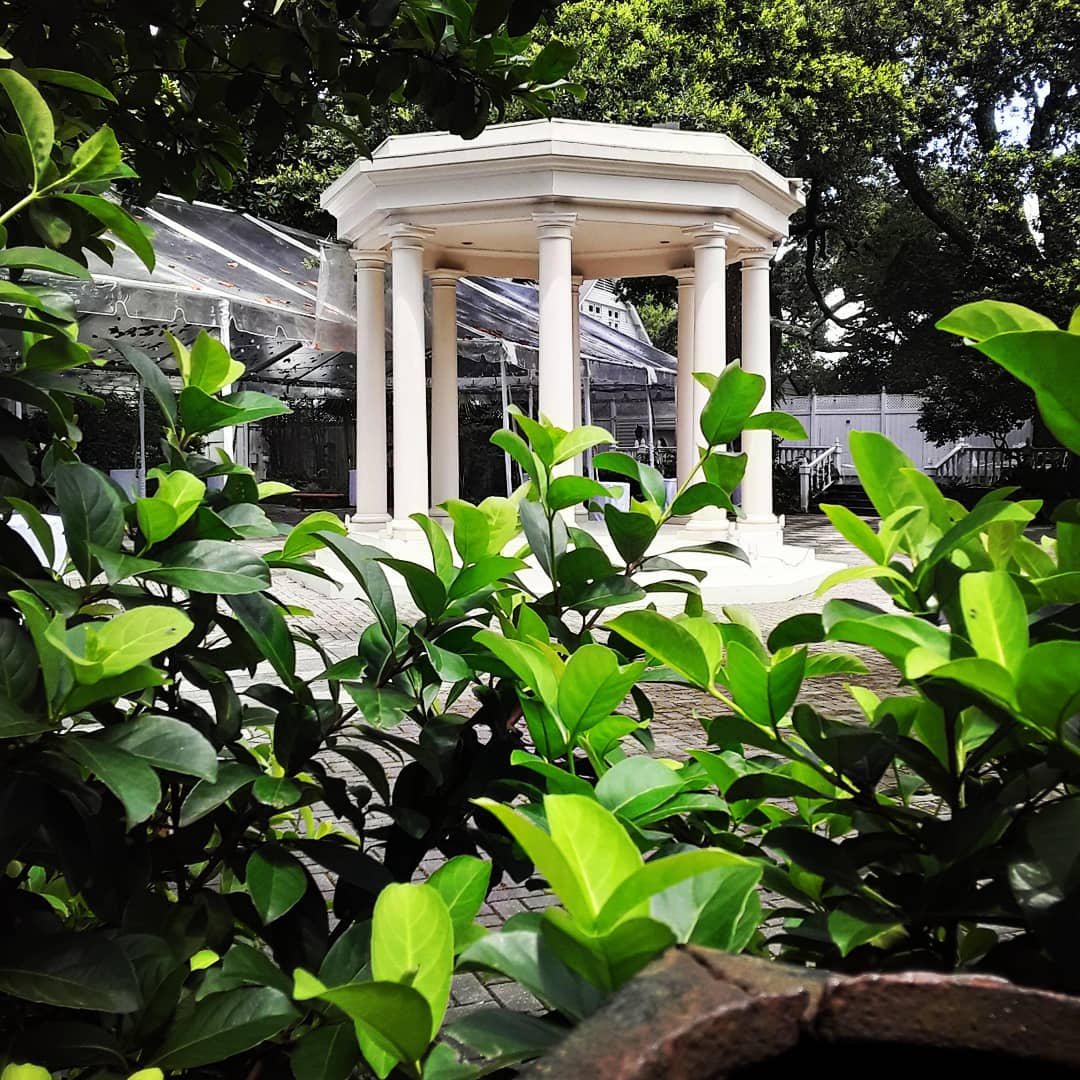It sounds like the plot of a Hollywood summer blockbuster — a vast campaign of espionage and propaganda taking place on U.S. soil that must be stopped before the fabric of America unravels. But this story isn’t fiction. From the 1930s to 1941, members of the National Socialist German Workers’ Party were secretly building institutions to spread Adolf Hitler’s policies and actively attempting to turn American public opinion against entering any upcoming war.
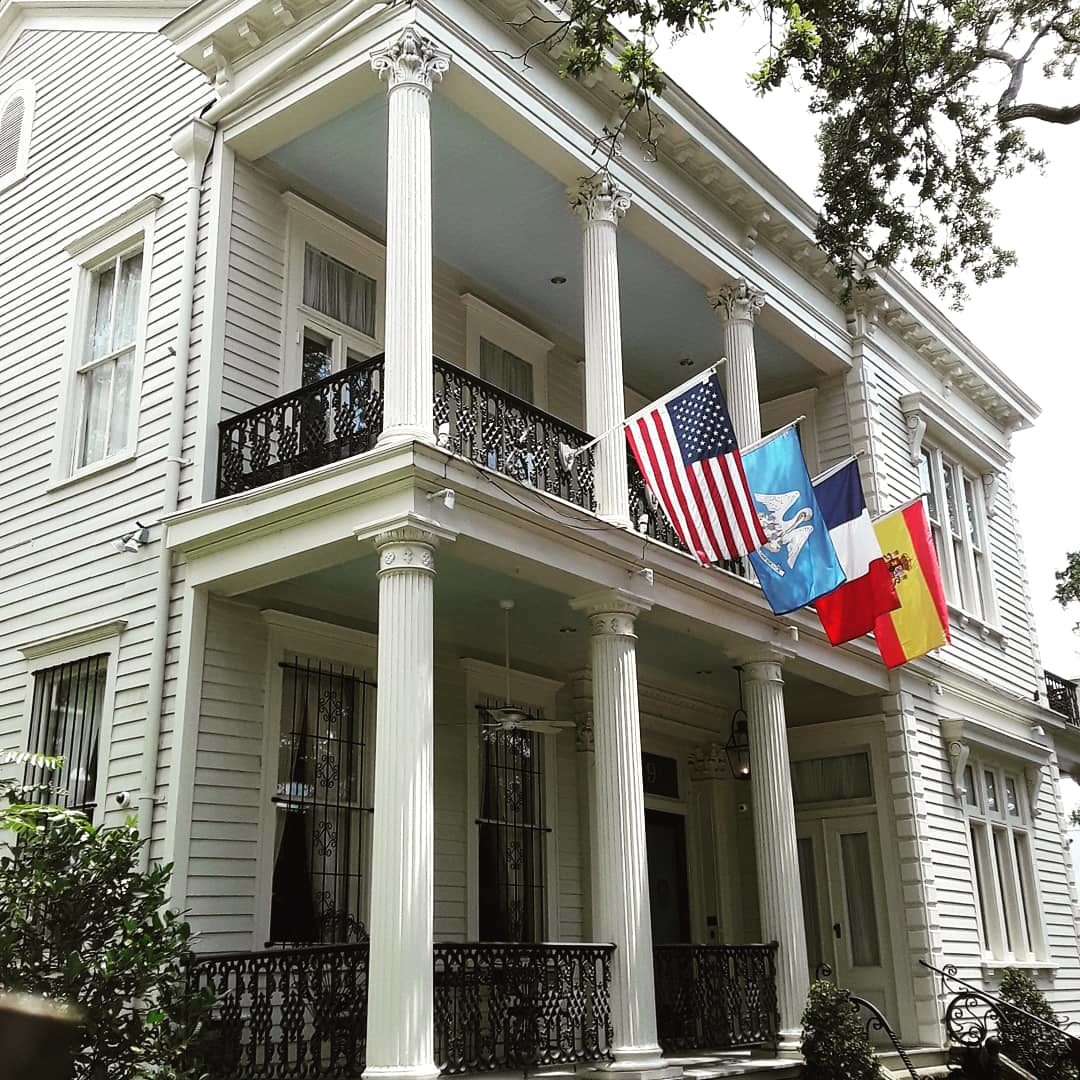
Part of the conspiracy was enacted right here in New Orleans. It wasn’t some cliche of passing pamphlets from a seedy backroom with dim lighting and cackling villains. Rather, the plan was carried out from a stately St. Charles mansion where Baron Edgar von Spiegel, German Consul to New Orleans, undertook his campaign of intimidation, espionage, and misinformation.
The Plan
Adolf Hitler came to power in Germany in 1933. Immediately after plans were put in place to spread his policies throughout the Western world. Meeting with significant resistance in Europe, the Nazi Party set their sights on corrupting the United States from within. Institutions such as the Transocean News Service, the German Bund, Comradeship USA, and the American Fellowship Forum were all aimed at collecting information on American public opinion on possibly entering a new war while spending hundreds of thousands of dollars to send propaganda to American citizens of German ancestry.
The German Bund even went so far as to offer free trips to Germany to German American teenagers who would be educated in their homeland over the course of a summer. What the unsuspecting parents of these teenagers didn’t know was the education their children would recieve was in Nazi training camps and that many of their children could come back to America indoctrinated with pro-Hitler ideals.
Walter Kappe, leader of Comradeship USA, detailed the goals of many of these organizations as such: 1) foster relationships with German Americans, 2) build their confidence in a German victory, 3) never allow criticism or interference in America’s internal affairs to be known, 4) report any concerning public opinion in the German American’s attitudes toward Nazisim, 5) monitor how anti-Jewish sentiment is developing, 6) avoid at all costs asking these questions directly, and 7) furnish Kappe himself with copies of all incriminating information for further use.
The ‘Notorious’ Baron von Spiegel and The Elms Mansion
Built in 1869 for “Yankee in Gray” Watson Van Benthuysen II, the Elms Mansion has been home to Van Benthuysen, the Quartermaster for Jefferson Davis during the Civil War, and John Elms, owner of the largest coin operated amusement company in the South. It’s also been operated as a special events venue since the 1970s. However, we’re focusing on the ten years (1931-1941) the Elms served as the German Consulate in New Orleans. It was during this time Baron Edgar von Spiegel, a WWI U-boat captain and POW, and his predecessor, Ernst Wendler, used the cover of diplomacy to hide their true purpose.
From inside the sprawling mansion, Baron von Spiegel focused on three main tasks contributing to the Nazi conspiracy. First, he would gather intelligence on commercial shipments bound for countries that opposed Hitler. Next, he set out on a campaign of intimidation against the owners and editors of German language newspapers in the U.S. to ensure they published pro-Nazi propaganda as news. Finally, he sought to corrupt universities throughout the South by attempting to place Nazi sympathizers as Foreign Language department heads.
The first part of the plan actually went well for the Baron for several years. Transmitting from the cellar of the Elms, he radioed troop movements, commercial shipment destinations, and the routes for each to U-boats (Nazi submarines) hidden in the Gulf of Mexico. With this information, the U-boats could either follow and overtake the ships or pass the coordinates along to the German Navy, allowing them to map troop and commercial routes.
The second phase of the plan focused more on propaganda and intimidation than espionage. The conspiracy leaders believed that any American citizen with German heritage was duty bound to their ancestral country to support the Nazi party. Because Baron von Spiegel wasn’t only the consul to New Orleans but to the entire Southeast region (from Texas to Florida), there were thousands of German Americans for him to attempt to reach through the newspapers.
One of the largest concentrations of German Americans at that time was in Texas, and so, the Baron focused his attention on G. F. Neuhausen, the editor of the largest German language newspaper in the state. After the exchange of several increasingly threatening letters, the Baron traveled over 700 miles to meet Neuhausen in person in hopes of finally making the editor print what the Baron wanted. Unfortunately for the Baron, Neuhausen was made of stronger stuff than anticipated and refused to turn his paper into a propaganda rag for Hitler. While the Baron was unsuccessful in intimidating Neuhausen, the lengths he would go to to achieve his goals earned him the moniker of ‘notorious’ among the Committee of Un-American Activities personnel assigned to watch him.
The third part of the plan was perhaps the most brazen. Baron von Spiegel wrote to the head of several universities, including the University of Florida, offering amazing collections of German language books, completely free of charge, on the condition the Baron be allowed to “approve” the head of the German language department. He planned to place pro-Hitler professors into these roles so they could control the curriculum. This would allow the department heads to slip Nazi policies into higher education classrooms without the public being any the wiser.
So, did the Baron succeed in his plans? The answer is both yes and no. He was able to communicate with the hidden German U-Boats for years causing untold damage to shipping lanes, but he largely failed at making newspapers or universities promote propaganda for him. Perhaps with more time, he would have achieved more marked victories. Fortunately though, the Committee of Un-American Activities was able to secure enough evidence against the Baron, the network of German Consulates throughout America, and the cover institutions the Germans had built to expel them all from the country.
In 1941, the U.S. Government ruled every employee of and/or leader of a German Consulate or German cover institution would have less than one month to leave America. So, from June to July that year, thousands of exposed German nationals returned overseas and prepared to fight the new world war from European soil.
As for von Spiegel, he lived 20 more years, eventually dying in Germany in the early 1960s. While not widely remembered for his part in a far reaching WWII conspiracy, his odd legacy lives on along the St. Charles streetcar line. The Elms Mansion today is more known as a destination for lavish wedding parties than espionage. But the next time you pass this beautiful building, remember potentially shattering moments of history are often hidden in plain sight.
Want to explore St. Charles Avenue more? Check out these articles:
Haunted NOLA: When the Devil lived on St. Charles Avenue and ate his wife
Behind Dem Bones: The Punny Skeleton House on St. Charles Avenue
Historic St. Charles Avenue Mansion, Carnival icon, lost in blaze

